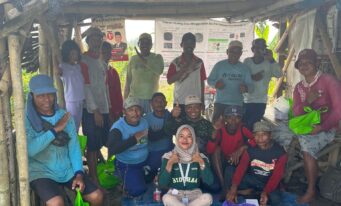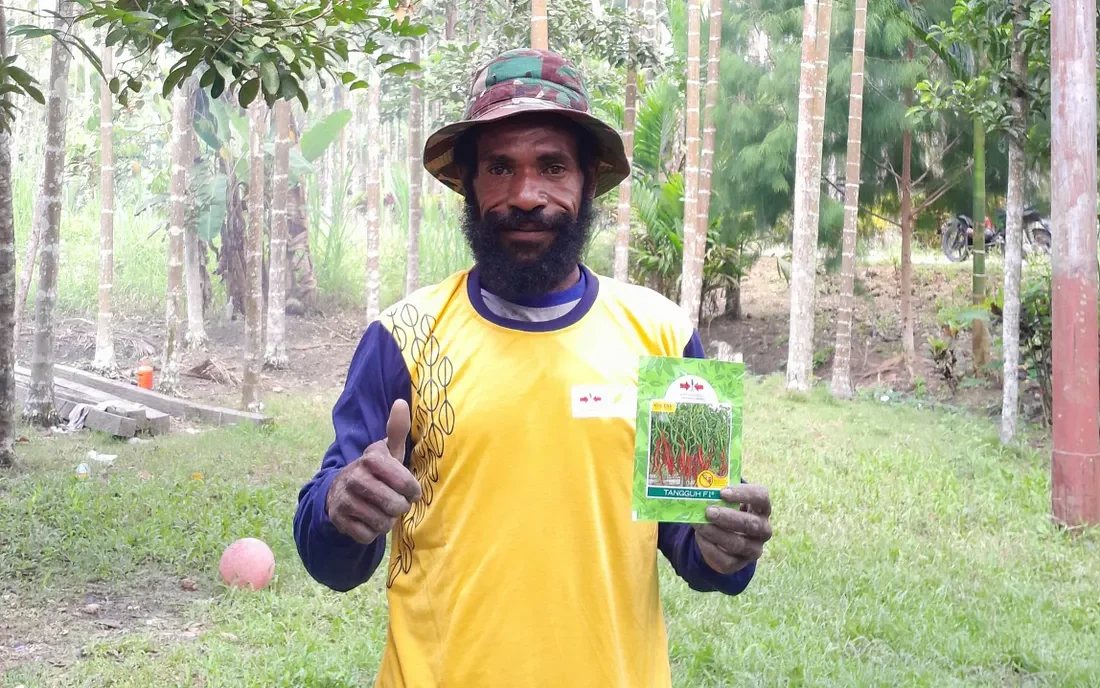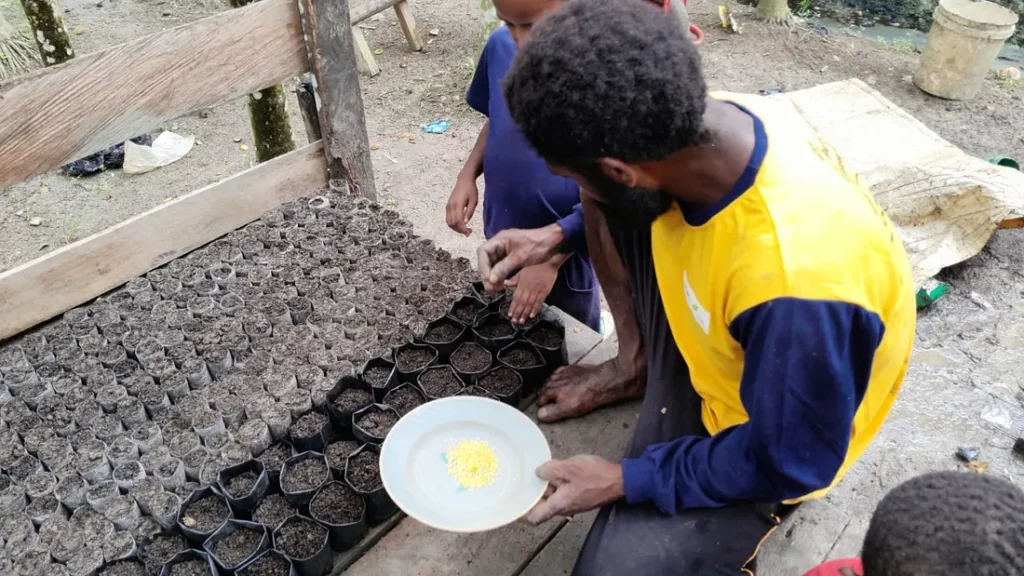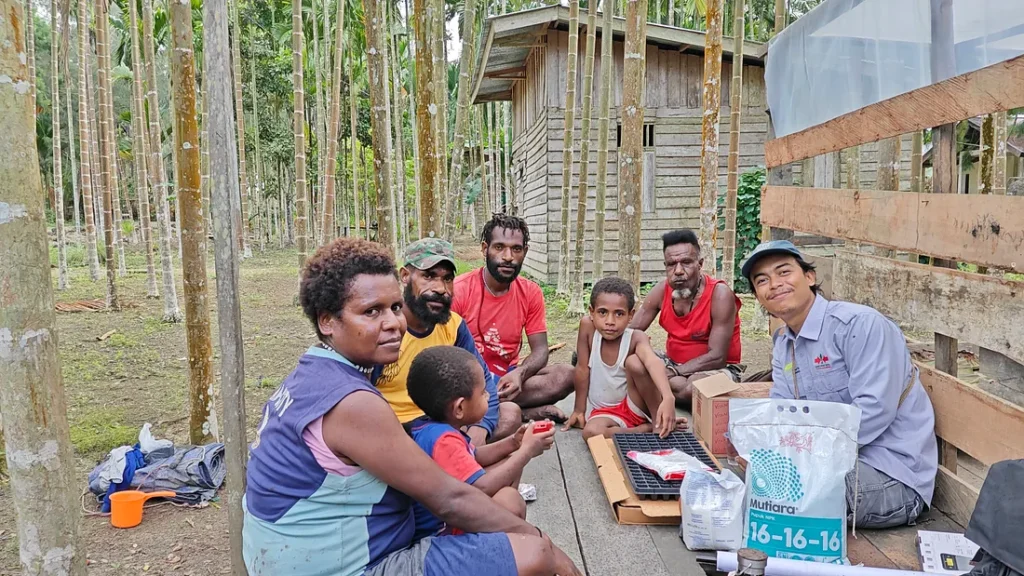

In the eastern corner of Indonesia, in Keerom, Papua, a new spirit is growing from the field of Kaka Olaiy Komba, a local farmer who has begun his journey of change with resilience.
Kaka Olaiy has long been involved in horticulture. Previously, he cultivated local bird’s eye chili in his garden to meet daily needs. The results were modest, yet technical challenges in crop care and pest control often stood in the way. Limited access to technical guidance meant that his yields were not always optimal.

Today, Kaka Olaiy’s determination to become a stronger, more advanced farmer is starting to bear fruit. He is the first Papuan farmer to grow Curly Red Chili (CMK) Tangguh F1 variety from Cap Panah Merah (East West Seed Indonesia) on his 500 m² plot. This is more than just changing varieties—it is a tangible step toward better farming practices.
Through continuous support from YBTS Technical Field Officers (TFO), Kaka Olaiy receives hands-on guidance—from seedling preparation, crop nutrition, to pest management. He is now fully dedicated to caring for his chili plants, learning each day about fertilization and crop protection to produce high-quality chilies fit for the market.

On Friday morning, July 25, 2025, when visited at his field, Kaka Olaiy was actively tending his crop. He carried out routine weeding and installed fruit fly traps around the chili field. This practice marks a new step for him—preventive action to protect his crops from one of horticulture’s most destructive pests.
Fruit flies are notorious for causing serious damage to horticultural crops, including chili. By applying this control method, he hopes to suppress pest populations and preserve the quality of his harvest.
That morning, together with the TFO in Keerom, Kaka Olaiy was trained to prepare the traps: soaking cotton with methyl eugenol, setting up the devices, and arranging the distance between them across the field. The TFO also explained the purpose and function of these traps, ensuring that knowledge is effectively transferred and can be shared with fellow farmers.
Written by: Rizki Ramdhani – TFO Keerom, Papua